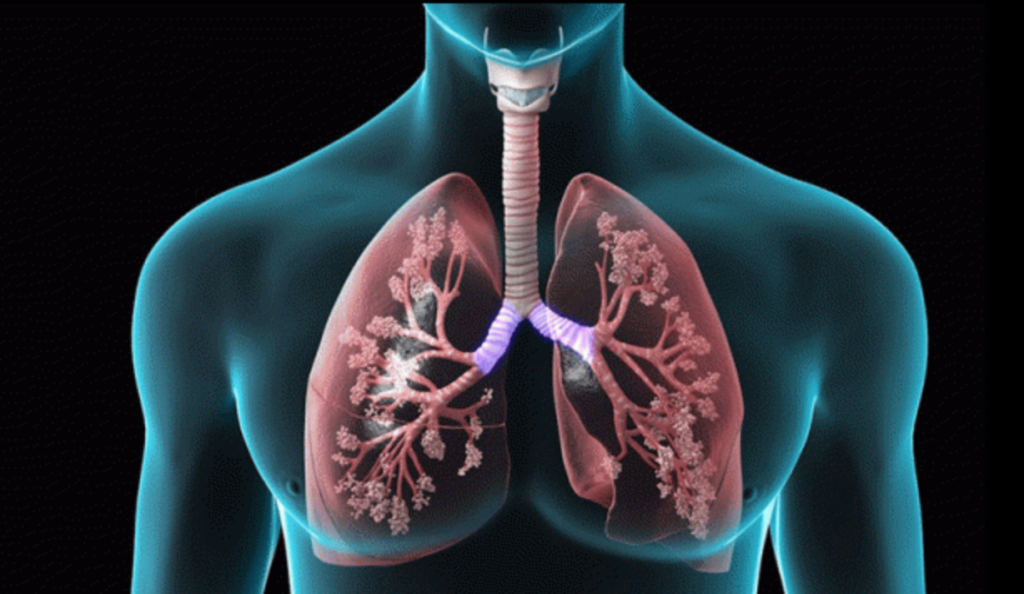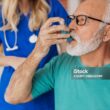Chronic Obstructive Pulmonary Disease (COPD)
Chronic Obstructive Pulmonary Disease (COPD): An Awareness of the Breathing Challenge
Breathing becomes challenging for those with a series of lung illnesses called chronic obstructive pulmonary disease (COPD). COPD, often known as chronic bronchitis or emphysema, is a disease that impairs breathing and gets worse over time. Although there isn’t a treatment for COPD, individuals can live active, satisfying lives if their condition is properly managed.
Table of Contents

COPD: What is it?
Chronic Obstructive Pulmonary Disease (COPD)
The term “COPD” refers to a group of lung disorders that limit airflow. The two principal offenders are:
- Emphysema: This illness reduces the surface area available for gas exchange by harming the lungs’ air sacs, called alveoli.
- Chronic Bronchitis: This condition is characterized by inflammation and constriction of the bronchi, which are caused by an overabundance of mucus.
These disorders may arise separately or in tandem, exacerbating the general dyspnea associated with COPD.
Reasons for COPD
Chronic Obstructive Pulmonary Disease (COPD)
The main offender of COPD is:
- Smoking: Over 70% of COPD cases are caused by cigarette smoke, making it the primary cause of the disease. Smoke’s irritating and damaging compounds cause lung irritation and damage, which eventually obstructs airflow.
Nevertheless, COPD can also result from other reasons, such as:
Chronic Obstructive Pulmonary Disease (COPD)
- Secondhand Smoke: The chance of developing COPD can also be greatly increased by being around secondhand smoke.
- Air Pollution: Burning biomass fuels, industrial emissions, and traffic fumes can all cause long-term air pollution exposure that can irritate the lungs and cause COPD.
- Occupational Exposures: Breathing in chemicals, dust, or fumes while working in several occupations can harm your lungs and raise your chance of developing COPD.
- Genetics: Although not a direct cause, genetics can influence a person’s propensity to develop COPD.
COPD symptoms
Chronic Obstructive Pulmonary Disease (COPD)
Early signs of COPD can be mild and easily disregarded. But when the illness worsens, they stand out more and consist of:
- Breathlessness: This is the most prevalent symptom and is particularly apparent when exerting oneself.
- Chronic Cough: One of the main indicators of COPD is a chronic cough that frequently produces mucus (phlegm).
- Wheezing: Narrowed airways cause a whistling sound to be produced during breathing.
- Chest Tightness: Breathing problems may be accompanied by a tightness or pressure in the chest.
- Fatigue: The increased work needed to breathe due to COPD can make even routine tasks exhausting.
- Frequent Respiratory Infections: Colds, the flu, and pneumonia are more common in people with COPD.
COPD diagnosis
Chronic Obstructive Pulmonary Disease (COPD)
The diagnosis of COPD usually entails a mix of:
- Medical History: Your symptoms, smoking history, and exposure to risk factors will all be questioned by the doctors.
- Physical examination: This involves evaluating your breathing patterns and listening to your lungs to detect wheezing.
- Spirometry: is a lung function test that gauges how quickly and how much air you can forcibly exhale.
- Chest X-ray: This can help rule out other lung problems but is not a conclusive diagnosis for COPD.
- Blood tests: These might be performed to rule out further reasons for dyspnea.
COPD treatment
Although there isn’t a cure for COPD, there are therapies that can help control symptoms, enhance quality of life, and halt the illness’s progression.
- Quitting smoking: is the single most essential thing you can do to manage your COPD. Giving up smoking can greatly reduce symptoms and help stop additional lung damage.
- Bronchodilators: These drugs ease breathing by relaxing the muscles in the airways.
- Inhaled Steroids: Inhaled steroids have the potential to lessen inflammation and alleviate symptoms in certain individuals with COPD that has an inflammatory component.
- Pulmonary Rehabilitation: To assist individuals with COPD in managing their symptoms and continuing with everyday activities, this program combines education and exercise training.
- Oxygen Therapy: To raise blood oxygen levels and facilitate breathing, more oxygen may be required in situations of severe COPD.
Having COPD and living
Even though COPD presents difficulties, there are things you can do to successfully manage it:
- Create a customized management strategy: Together with your physician, come up with a personalized treatment strategy.
- Vaccinate yourself: Frequent vaccines against the flu and pneumonia can help avoid respiratory infections, which can exacerbate the symptoms of COPD.
- Keep up a healthy way of living: Consume a healthy, balanced diet, do frequent exercise (as tolerated), and get enough rest.
- Control your stress: Stress can make COPD symptoms worse. Engage in relaxation exercises, such as deep breathing.
- Join a group for support: Relating to others who are cognizant of the difficulties associated with COPD can be beneficial both practically and emotionally.
Through adherence to their treatment plan and these tips, persons with COPD can manage their symptoms and lead active, satisfying lives.
Note: This data offers a broad picture of COPD. Seeking individualised advice and treatment from a healthcare expert is advised.


